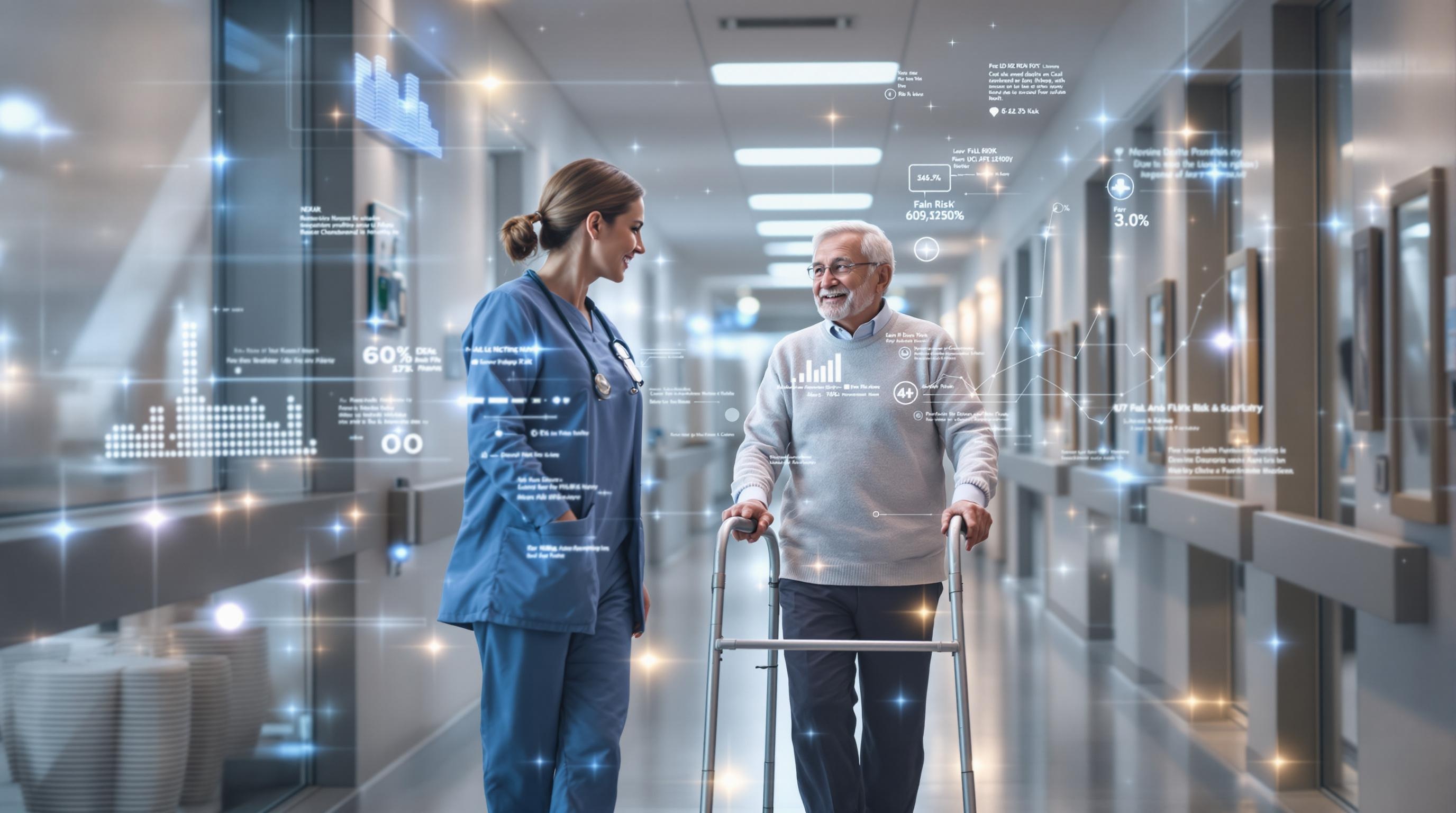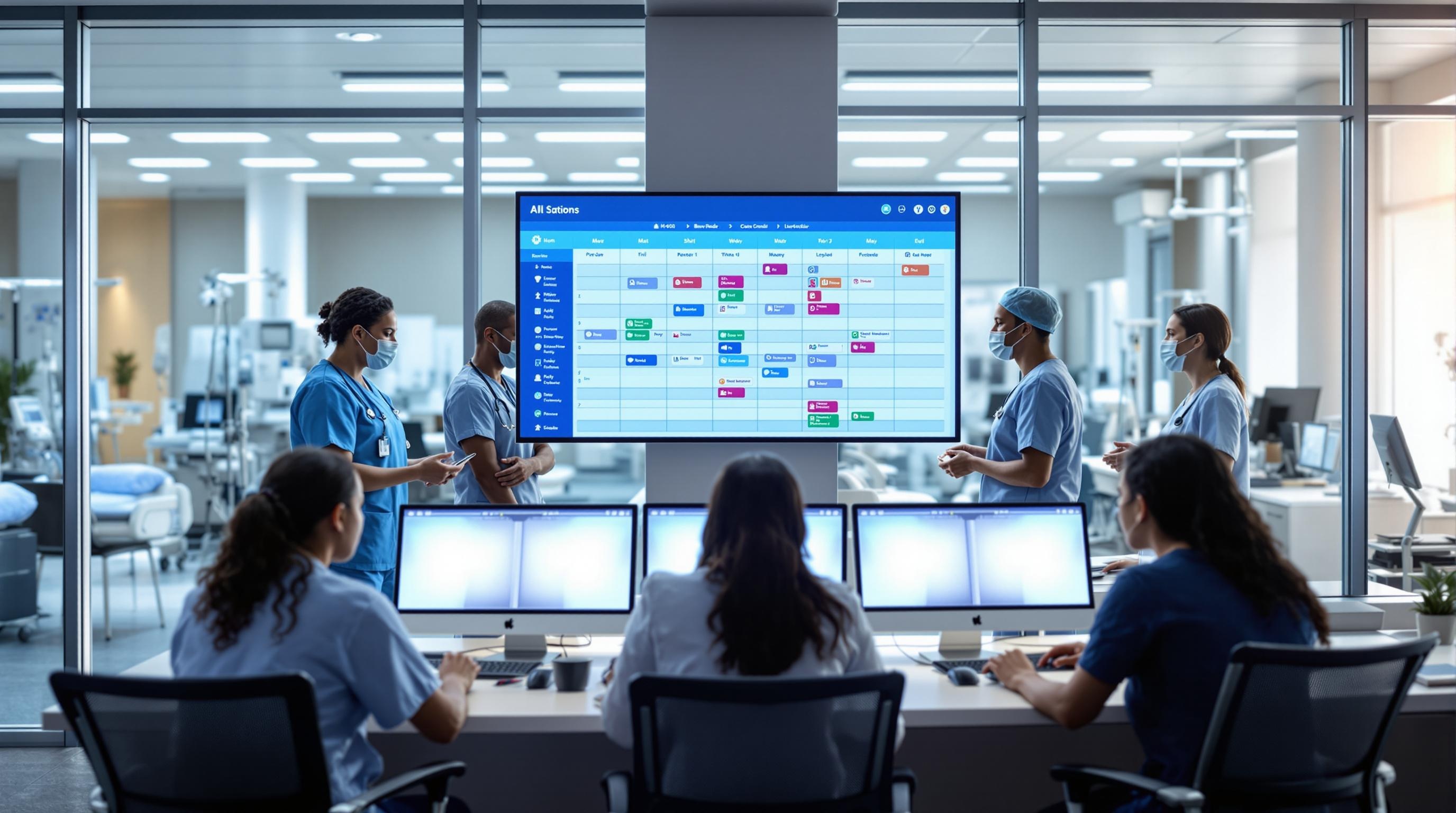How to Improve Resident Safety Scores in Skilled Nursing Facilities
Discover proven strategies to boost resident safety scores, enhance care quality, and meet CMS rating standards for skilled nursing facilities.
Quick Navigation
- 1. Introduction
- 2. Current Challenges in Improve Resident Safety Scores
- 3. How Sparkco AI Transforms Improve Resident Safety Scores
- 4. Measurable Benefits and ROI
- 5. Implementation Best Practices
- 6. Real-World Examples
- 7. The Future of Improve Resident Safety Scores
- 8. Conclusion & Call to Action
1. Introduction
Did you know that nearly one in four nursing homes in the United States currently holds a resident safety score below four stars, according to the latest CMS Five-Star Quality Rating data? For families seeking peace of mind and for skilled nursing facilities (SNFs) striving to deliver exceptional care, these ratings aren’t just numbers—they are a direct reflection of resident well-being, facility reputation, and even financial viability.
With the Centers for Medicare & Medicaid Services (CMS) now integrating staffing levels, turnover rates, and weekend nurse coverage into its enhanced star rating system, the spotlight on resident safety has never been brighter. Facilities are feeling the pressure to not just meet, but exceed, these evolving standards. Yet, persistent challenges—such as staffing shortages, high employee turnover, and inconsistent care protocols—continue to threaten safety outcomes and, by extension, CMS ratings.
So, how can skilled nursing facilities improve their resident safety scores and climb the ranks in the Five-Star Quality Rating System? In this article, we’ll break down the most up-to-date strategies backed by industry experts and research. From optimizing staffing models and leveraging technology to implementing robust quality improvement processes, we’ll guide you through actionable steps that SNFs can take to create safer environments for residents and deliver measurable results. Whether you’re a facility administrator, nurse leader, or quality assurance professional, these insights will help you move the needle on safety—and set your facility apart.
2. Current Challenges in Improve Resident Safety Scores
In today’s healthcare landscape, improving resident safety scores remains one of the most pressing challenges for skilled nursing facilities and long-term care providers. While the commitment to resident safety is unwavering, several complex issues continue to impact operational efficiency, regulatory compliance, and the overall quality of patient care. Below, we explore the key pain points, supported by current data and industry insights, that hinder progress in elevating resident safety scores.
-
Staffing Shortages and Turnover
Skilled nursing facilities are experiencing a critical shortage of qualified staff. The American Health Care Association reports that 94% of nursing homes faced staffing shortages in 2022. Insufficient staffing leads to increased workloads, burnout, and missed safety protocols, directly impacting resident safety outcomes. -
Ineffective Communication and Documentation
Communication breakdowns between care teams contribute to medical errors and delayed responses to resident needs. According to a CHT Healthcare report, communication failures are a leading cause of adverse events in healthcare, accounting for up to 70% of serious incidents. Incomplete or inaccurate documentation further exacerbates safety risks. -
Inadequate Training and Competency Assessment
Continuous staff education is essential, yet many facilities lack standardized training programs. The rapid adoption of new technologies and evolving care protocols make regular competency assessments crucial. Without them, staff may be ill-equipped to recognize or respond to safety threats. -
Medication Management Errors
Errors in medication administration remain a persistent safety challenge. The Institute of Medicine estimates that at least 1.5 million preventable adverse drug events occur annually in the U.S. alone, many within skilled nursing settings. These errors can lead to hospitalizations, regulatory citations, and increased liability. -
Data Silos and Lack of Interoperability
Many healthcare facilities still rely on disconnected systems or paper-based processes. This fragmentation prevents real-time data sharing, making it difficult to track safety metrics, identify trends, or implement timely interventions. -
Compliance with Evolving Regulations
Regulatory requirements from CMS, OSHA, and other bodies are frequently updated, placing significant pressure on administrators to stay current. Non-compliance not only jeopardizes safety scores but also risks financial penalties and reputation damage. -
Resident Complexity and High Acuity Levels
Residents admitted to skilled nursing facilities increasingly have multiple chronic conditions and complex care needs. This complexity elevates the risk of adverse events, such as falls, infections, and pressure injuries, which are closely monitored safety indicators.
These challenges have a ripple effect on operations, from increasing staff workload and turnover to consuming valuable resources for compliance management. Poor safety scores can lead to lower CMS star ratings, reduced reimbursement rates, and erosion of community trust. Facilities that proactively address these pain points—by investing in training, upgrading technology, and fostering a culture of safety—are better positioned to achieve high resident safety scores and deliver exceptional care.
For more detailed insights on patient safety and actionable solutions, visit CHT Healthcare’s overview of patient safety challenges.
3. How Sparkco AI Transforms Improve Resident Safety Scores
Improving resident safety scores is a top priority for skilled nursing facilities, impacting both resident well-being and regulatory compliance. Sparkco AI offers a comprehensive suite of features designed to address the most challenging aspects of resident safety. By leveraging advanced artificial intelligence and automation, Sparkco AI transforms safety protocols from reactive to proactive, enabling facilities to prevent incidents before they occur and streamline safety workflows.
-
Real-Time Fall Detection and Prevention
Sparkco AI uses intelligent sensors and predictive algorithms to monitor resident movement patterns continuously. The system can instantly identify unusual activity—such as sudden shifts or loss of balance—and alert staff before a fall occurs. Automated, real-time notifications ensure that caregivers can intervene promptly, significantly reducing the risk of fall-related injuries and improving safety scores. -
Automated Risk Assessments
Traditional risk evaluations often rely on manual, time-consuming processes that can overlook subtle warning signs. Sparkco AI automates this process by analyzing resident health data, recent behaviors, and environmental factors. The system generates dynamic risk profiles for each resident, providing actionable insights that help staff prioritize care and address potential safety issues before they escalate. -
Smart Alert Management
Excessive or irrelevant alerts can overwhelm staff, leading to missed critical incidents. Sparkco AI intelligently filters alerts, prioritizing those that require immediate attention. By reducing noise and highlighting urgent safety concerns, the system ensures a faster response to real emergencies—improving both resident outcomes and safety metrics. -
Infection Control Automation
Sparkco AI automates infection control protocols by continuously monitoring compliance with hygiene practices, room sanitation, and isolation requirements. The system provides real-time feedback and reminders, ensuring adherence to safety standards and reducing the risk of outbreaks. Automated documentation also simplifies reporting for regulatory audits. -
Seamless Incident Reporting and Analytics
Incident reporting is streamlined with Sparkco AI’s intuitive digital interface. Staff can quickly log safety events, and the AI automatically analyzes incident patterns to identify root causes. The platform generates easy-to-understand reports that guide leadership in refining safety policies and targeting improvements where they’re needed most. -
Integration with Existing Health Systems
Sparkco AI is designed for compatibility with electronic health records (EHR), nurse call systems, and facility management platforms. This integration means data flows smoothly between systems, giving caregivers a complete picture of each resident’s safety profile without extra manual data entry. The result is more coordinated care and improved safety outcomes across the facility.
By combining these advanced features, Sparkco AI empowers skilled nursing facilities to move beyond traditional safety practices. Its easy integration, intelligent automation, and actionable insights address key challenges in resident safety—helping facilities achieve higher safety scores and deliver better care.
4. Measurable Benefits and ROI
Implementing automated systems to enhance resident safety in skilled nursing facilities (SNFs) is not just a technological upgrade—it’s a strategic investment with proven, measurable returns. Facilities adopting these solutions consistently report higher safety scores, reduced incidents, and significant operational efficiencies. Below, we outline the key ROI metrics and benefits, supported by real-world data and case studies.
- Reduction in Adverse Events: Automated safety monitoring, such as fall detection and proactive alert systems, can reduce resident falls by up to 60% according to a study published in the Journal of Patient Safety. This directly translates into fewer injuries, lower liability, and improved resident well-being.
- Improved Compliance and Survey Outcomes: Facilities leveraging automation for documentation and incident tracking report a 35% improvement in regulatory compliance scores, as documented in ONC's Health IT in Post-Acute Care. Automated alerts ensure timely interventions and accurate reporting, reducing the risk of citations.
- Time Savings for Staff: Automating routine safety checks and incident documentation saves nursing staff an average of 2.5 hours per day per 100 beds (Health Catalyst case study). This allows clinicians to focus more on direct resident care and less on paperwork.
- Cost Reduction: Facilities report up to a 20% decrease in costs related to fall-related injuries and associated hospitalizations after implementing automated safety platforms (Becker’s Hospital Review). These savings stem from lower emergency interventions and reduced legal exposure.
- Faster Incident Response: Automated alert systems enable a 40% faster response time to resident emergencies, as shown in a Relias case study. Quicker interventions can drastically reduce the severity of injuries and improve outcomes.
- Enhanced Data Accuracy: Automated solutions reduce manual entry errors by up to 80% (NIH study), ensuring that safety events are accurately documented and trends are easily identified for ongoing quality improvement.
- Resident and Family Satisfaction: Facilities leveraging automation report a 15-20% increase in resident and family satisfaction scores, thanks to improved safety and transparent communication (LeadingAge report).
- Return on Investment (ROI): According to Fierce Healthcare, SNFs deploying comprehensive safety automation can achieve ROI in less than 18 months, driven by operational savings, reduced penalties, and improved census due to better safety ratings.
In summary, automated resident safety solutions yield substantial, quantifiable benefits—enhancing compliance, cutting costs, saving staff time, and most importantly, delivering safer environments for residents. The data demonstrates that automation is not merely a convenience but a critical driver of quality and sustainability in skilled nursing.
5. Implementation Best Practices
With CMS sharpening its focus on resident safety and quality of care in 2025, skilled nursing facilities must adopt a proactive approach to elevate safety scores. The following actionable steps, rooted in the latest CMS guidance and age-friendly measures, will help your facility deliver measurable improvement while avoiding common pitfalls.
-
Conduct a Comprehensive Safety Audit
Begin by assessing your current safety protocols and identifying gaps using CMS surveyor guidance. Engage interdisciplinary teams and frontline staff to gather insights.
Tip: Use checklists and CMS audit tools for consistency.
Pitfall to Avoid: Overlooking input from direct care staff who often spot issues first. -
Prioritize High-Risk Areas and Residents
Analyze incident data to identify patterns—such as frequent falls or medication errors—and focus resources where they are most needed.
Tip: Implement targeted interventions for high-risk residents.
Pitfall to Avoid: Spreading resources too thin across all areas without clear priorities. -
Standardize Safety Protocols and Training
Develop and reinforce standardized safety procedures, ensuring all staff receive regular, scenario-based training on updated protocols.
Tip: Incorporate scenario drills for fall prevention, infection control, and emergency response.
Pitfall to Avoid: Assuming initial training is sufficient—ongoing refreshers are critical. -
Leverage Technology for Monitoring and Reporting
Utilize digital tools for real-time incident reporting, medication management, and environmental monitoring to quickly identify and address safety hazards.
Tip: Choose user-friendly platforms with analytics dashboards.
Pitfall to Avoid: Failing to train staff on new technology, leading to underutilization. -
Engage Residents and Families in Safety Efforts
Involve residents and families in safety discussions, care planning, and feedback processes to build trust and identify hidden risks.
Tip: Hold regular safety forums or feedback sessions.
Pitfall to Avoid: Dismissing resident or family concerns as isolated incidents. -
Establish Continuous Quality Improvement (CQI) Cycles
Implement ongoing CQI processes to review safety data, evaluate interventions, and adjust strategies as needed.
Tip: Use Plan-Do-Study-Act (PDSA) cycles for rapid improvements.
Pitfall to Avoid: Treating improvement as a one-time event instead of an ongoing process. -
Communicate Change Effectively and Support Staff Buy-In
Transparent, regular communication about safety goals and progress is essential. Address concerns early and celebrate milestones to foster a safety culture.
Tip: Appoint safety champions on each shift for peer support.
Pitfall to Avoid: Not addressing change fatigue or resistance among staff. -
Monitor Compliance and Celebrate Success
Track adherence to new protocols and publicly recognize teams or individuals who contribute to improved safety outcomes.
Tip: Share positive trends in staff meetings and newsletters.
Pitfall to Avoid: Focusing only on negative outcomes without acknowledging progress.
Change Management Consideration: Successful improvement requires leadership commitment, clear communication, and empowering all staff to be safety advocates. Provide ongoing education, feedback channels, and emotional support to help teams embrace and sustain change.
6. Real-World Examples
Real-World Examples:










